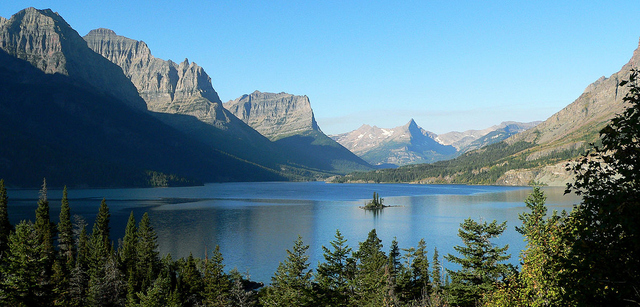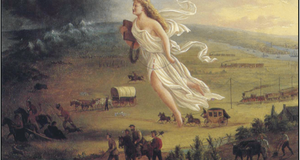Student VoicesHumanity and Its Place in Nature: Rethinking the Reality of 'Wilderness'
By
2014, Vol. 6 No. 09 | pg. 1/2 | »
KEYWORDS:
The Western concept of wilderness encompasses pristine, untrammeled land viewed as “the last remaining place where civilization…has not fully infected the earth” (Cronon, 1995, p. 69). Indeed, many Americans possess this dualistic vision that separates nature and humanity, thus leading to the creation of preservation areas that restrict human habitation. Of course, the protection of what is perceived as “pristine” and “virgin” land completely ignores the fact that humans inhabited these lands for millennia without permanently damaging them. Instead, these preserves are created in response to the environmental degradation caused by modern society and industrialization as well as society’s modern, flawed conceptualization of wilderness. William Cronon in “The Trouble with Wilderness; or, Getting Back to the Wrong Nature” (1995), Mark Woods in “Wilderness” (2001), and Richard Mertens in “Can’t See the Forest for the Trees” (2008) reject the socially constructed views of nature and wilderness as well as oppose the notion that humans are separate from nature. In concert with these scholars, I argue that humans are ethically charged with the responsibility to care both for human and non-human life.
Cronon (1995) points out that the banishment of Native Americans from lands that had been their homes for centuries in order “to create an ‘uninhabited wilderness’…reminds us just how invented, just how constructed, the American wilderness really is” (p. 79). In “Can’t See the Forests for the Trees,” Richard Mertens rejects the view that nature is untrammeled and completely separate from humanity. He identifies the notion that “the idea of pure and untrammeled nature has also served a more spiritual purpose, preserving the image of an unfallen world, untainted by war, industrialism, and other afflictions of civilization” (Mertens, 2008, p. 39). The ideal of humanity existing apart from nature simply does not reflect reality. Humans are inexplicably bound to nature and affect it, some more than others. Mertens explains that there are plenty of forested lands where people live and work and that conservationists tend to ignore them because they focus on the need to create preserves and national parks that are separate from humanity. Mertens (2008) goes so far as to argue “that in many parts of the world globalization and the policies that go along with it are in fact helping to create” (p. 38) forests. Indeed, all reforestation efforts, even those attributed to globalization and policy decisions, are commendable and must be encouraged; still, we must not forget the real consequences that globalization has had on the environment as a whole. Nonetheless, I agree with Mertens (2008) when he rejects Malthus and Darwin’s principle “that humans and human thriving are inevitably harmful to nature” (p. 39). Population growth and human activities, some unintentional and some intentionally greedy, have indeed placed nature in grave peril. Still, I believe that humans, as an integral part of nature, are beginning to recognize our ability to heal and protect nature, which includes fellow humans. I remain optimistic that a more gentle and kind world is possible. In “Wilderness,” Mark Woods (2001) argues that we have acquired “a ‘received wilderness idea’ that is historically shaped from western notions of wilderness” (p. 351). To support his premise, Woods cites the Wilderness Act of 1964, which explicitly defines wilderness “as an area where the earth and its community of life are untrammeled by man, where man himself is a visitor who does not remain” (as quoted in Woods, 2001, p. 350). The previous American notion of wilderness was full of hostility, inspired by manifest destiny and characterized by a drive to tame and transform it for economic gain. Eventually, however, by the early 1900s “so little wilderness remained that Americans began to romanticize it and see it as something good that should be preserved” (Woods, 2001, p. 351). As a result, we now have “more than 600 federal, legally designated wilderness areas in the United States that comprise 4.5 percent of the land mass” (Woods, 2001, p. 351). Of course, land preservation is a vital component of responsible environmentalism. However, in some cases, the creation of wilderness areas results in displacement and oppression of Native Americans in order “to create empty landscapes that were ‘suitable’ for wilderness designation” (Woods, 2001, p. 356). How can we possibly justify displacing and impoverishing people as a means to create wilderness areas that are supposedly “virgin” and “pristine?” This emphatically ignores the fact that humans have been living and working these lands for centuries, perhaps even longer. Woods (2001) points out that in R. Nash’s “Wilderness and the American Mind,” written in 1982, Native Americans are “conspicuously absent from much of his account” because the “native inhabitants of North America are not seen by Nash as ‘civilized men’” (p. 359). This does not surprise me; popular American history is full of gaps and missing voices because the voices of marginalized people, including Native Americans, are often disregarded or silenced. William Cronon (1995) begins “The Trouble with Wilderness; or, Getting Back to the Wrong Nature” by fervently declaring that wilderness “is not a pristine sanctuary where the last remnant of an untouched, endangered, but still transcendent nature can for at least a little while longer be encountered without the contaminating taint of civilization” but “is a product of that civilization” (p. 69). The modern perception of wilderness, according to Cronon, was spearheaded in the late 1800s by men like John Muir, William Wordsworth and Henry David Thoreau and took hold with the convergence of the sublime and the frontier. The two transformed the image of wilderness by “freighting it with moral values and cultural symbols that it carries to this day” (Cronon, 1995, p. 72) and led Cronon (1995) to proclaim “that the modern environmental movement is itself a grandchild of romanticism and post-frontier ideology” (p. 72). The ideology of conquering and exerting dominion on nature was replaced by the belief that it was necessary to preserve nature from humanity. Cronon, however, refutes the overly romanticized notion that there is a dualism between humanity and nature. Instead, he believes that “idealizing a distant wilderness too often means not idealizing the environment in which we actually live, the landscape that for better or worse we call home” (Cronin, 1995, p. 85). Cronon (1995) asserts that “when we pretend to ourselves that our real home is in the wilderness – we give ourselves permission to evade responsibility for the lives we actually live” (P. 81). Further, Cronon (1995) reminds us to “celebrate the wildness in our own backyards, of the nature that is all around us if only we have eyes to see it” (p. 86). Cronon (1995) also warns that focusing too much attention on wilderness makes other corners of the earth “less than natural and too many other people become less than human, thereby giving us permission not to care much about their suffering or their fate” (P. 85). Not surprisingly, Cronon (1995) adds that the people mostly affected by environmental problems are the poor (p. 85). For example, while Cronon (1995) does not minimize the plight of endangered animals, he expresses the irony of designating “sacred land” to protect a single species like the spotted owl (p. 82) in the same country that forcibly removes native people from their land in order to preserve wilderness. Cronon (1995) points out that the banishment of Native Americans from lands that had been their homes for centuries in order “to create an ‘uninhabited wilderness’…reminds us just how invented, just how constructed, the American wilderness really is” (p. 79).Continued on Next Page » Suggested Reading from Inquiries Journal
Inquiries Journal provides undergraduate and graduate students around the world a platform for the wide dissemination of academic work over a range of core disciplines. Representing the work of students from hundreds of institutions around the globe, Inquiries Journal's large database of academic articles is completely free. Learn more | Blog | Submit Latest in Environmental Studies |

















